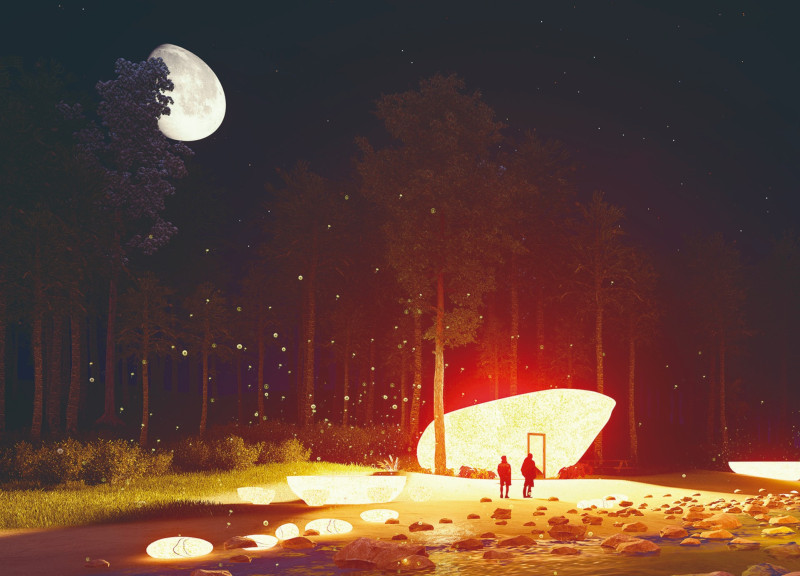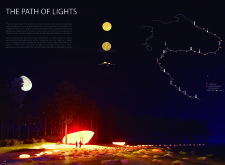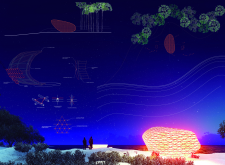5 key facts about this project
### Overview
The Path of Lights is located along the Latvian coastline, an area known for its maritime heritage. The project encompasses a series of contemporary lighthouses and cabins that function as navigational guides and resting spots for hikers exploring coastal trails. By drawing from historical references to maritime navigation while incorporating modern architectural principles, the design seeks to celebrate Latvia's cultural identity and enhance the cohesion between built structures and natural landscapes.
### Spatial Strategy
The design approach emphasizes the strategic placement of luminous cabins along established hiking paths, creating a linkage to historical lighthouses while fostering interaction with the surrounding environment. The cabins are informed by organic geometries that reflect the natural forms found in coastal settings, promoting a harmonious integration with the landscape. Carefully designed communal spaces within the cabins offer opportunities for social interaction, countering the isolation experienced in remote natural areas and enhancing the overall user experience.
### Material Selection
A diverse material palette underpins the project's architectural vision, contributing to its functional performance and aesthetic appeal. Key materials include aluminum for structural integrity and lightweight construction, translucent polycarbonate to facilitate natural light while ensuring weather resistance, and glass for visual connectivity between interior and exterior spaces. A durable concrete base provides stability against coastal elements, while the incorporation of natural wood creates inviting interiors. LED lighting systems enhance navigability and contribute to the illuminated pathways, echoing the traditional role of lighthouses in maritime navigation. This thoughtful selection of materials ensures that each cabin not only serves its intended purpose but also enriches the sensory experience for visitors.






















































